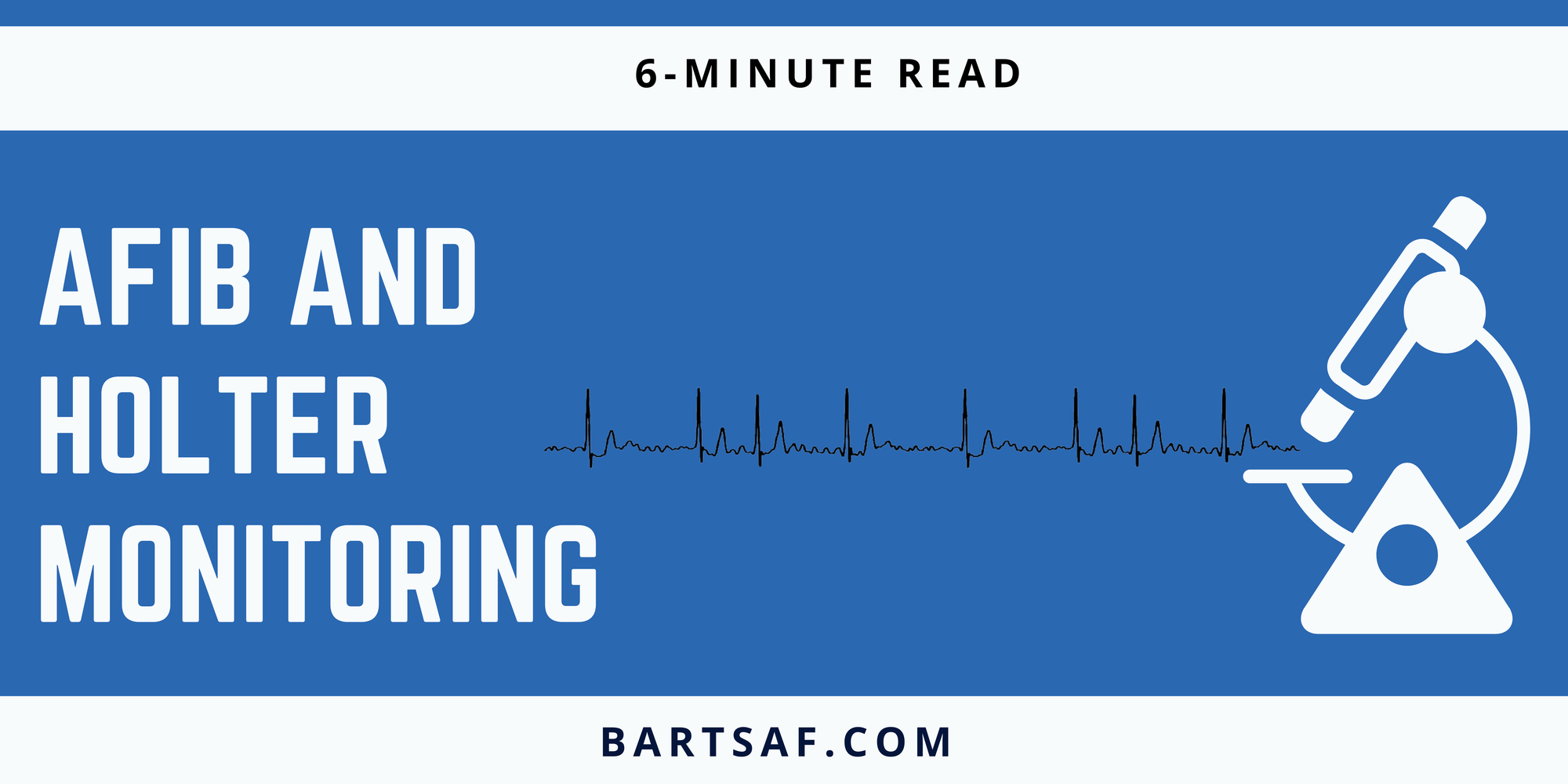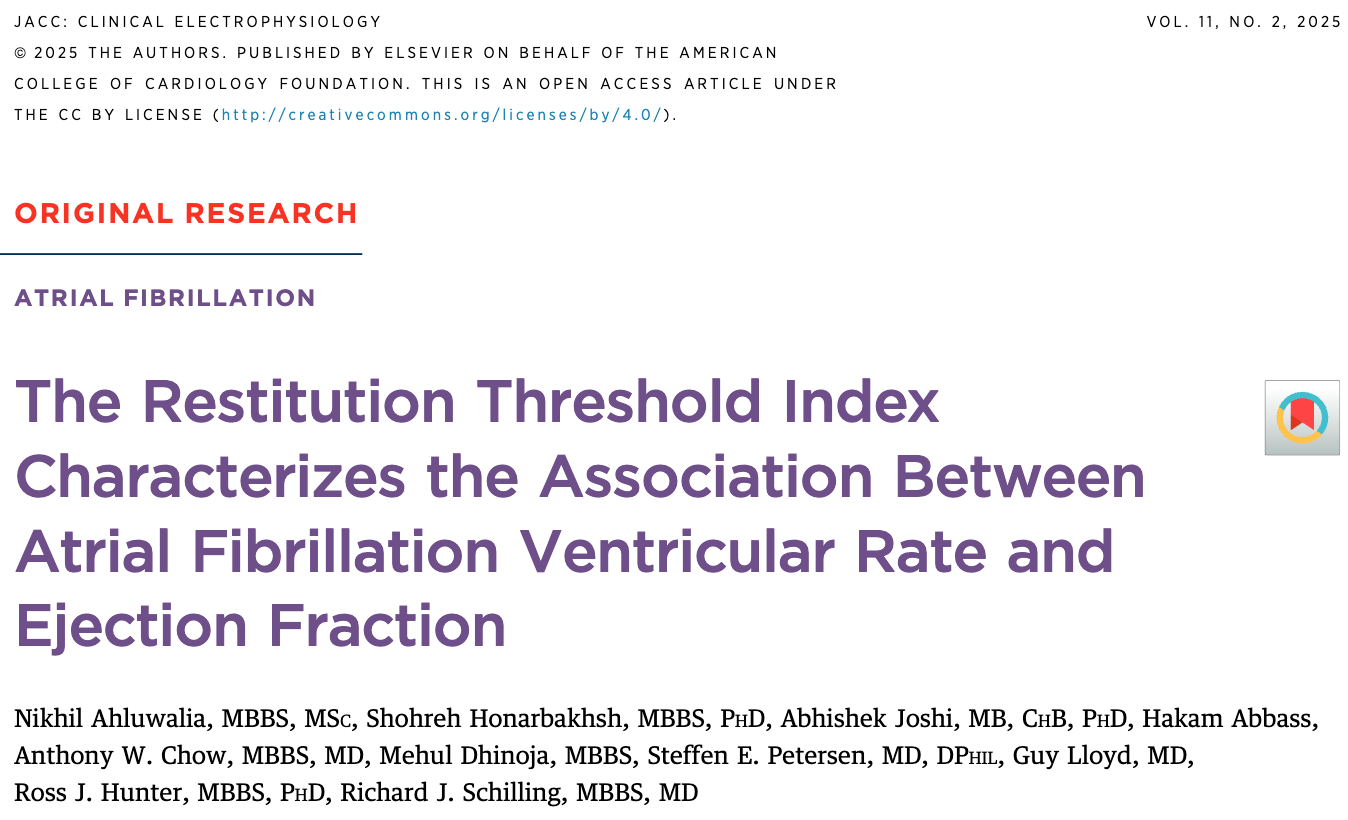AF and Holter monitor testing

What is Holter Monitoring?
A Holter monitor is a compact, wearable device that continuously records your heart rhythm using an ECG. It offers prolonged monitoring, typically over a period ranging from 24 hours to 14 days. Unlike a standard 12-lead ECG, which provides only a brief snapshot (around 10 seconds) of your heart rhythm, a Holter monitor captures a detailed, continuous record, including periods when you're asleep and or (hopefully) be on when you are experiencing symptoms.
They have an important role in the diagnosis and management of Atrial Fibrillation but are vulnerable to misuse! So it is important to know when they are needed and can change your management and when there may be better tests available instead.


Making the AF Diagnosis with Holter
Holter monitors are commonly ordered in an attempt to detect atrial fibrillation (AF). They are typically ordered when an individual reports palpitations or dizziness symptoms. However, the time course of AF can be intermittent and so it is important to match the duration of Holter monitoring to the symptom frequency. For example:
- if you have symptoms constantly, a 12-lead ECG done there and then in the clinic can reveal an immediate diagnosis.
- if you have symptoms once a day (e.g. when you're about to go to sleep) or if they are provokable (e.g. when you exercise) then a 24- or 48-hour Holter may be best
- if you have symptoms once a week, a 7 or 14-day Holter is most likely to capture this
Unfortunately symptoms may be unpredictable or occur less frequently than this. And so they may not occur during the monitoring period— often frustratingly it can seem like they always occur as soon as you take the monitor off. While a Holter monitor is effective when symptoms are frequent and predictable, portable or patient-activated wearable ECG devices can be of greater use for capturing unpredictable symptoms in real-time.
Assessing Rate Control with Holter Monitoring
In patients with known AF: Holter monitoring can an overview of your heart rate control. They can assist your medical team in deciding if adjustments to medication dosage are necessary. However, for many patients, symptoms rather than continuous monitoring guide medication adjustments. Other tools, such as wearable devices, pulse oximeters, or blood pressure monitors, might sufficiently assess heart rate and provide a clearer picture of rate control over a longer period of time.
Conventional measurements derived from Holter monitoring, like average heart rate also have limitations in AF. Our research highlighted this and findings from the AFHF trial results, suggests that novel metrics derived from the Holter monitor may offer more accurate insights into the effectiveness of rate control and how it may be effecting your heart.

Monitoring AF Recurrence After Ablation
Holter monitoring is routinely employed in clinical practice and research trials to detect AF recurrence after catheter ablation procedures. Some electrophysiologists regularly schedule Holter monitoring at intervals 3, 6, and 12 months post-ablation to identify any asymptomatic episodes and overall effect on AF burden.
There is no set guidance on how long the monitoring should be for, although we know the longer we monitor for the more likely we are to detect AF recurrences. A large Canadian study, showed that the sensitivity of intermittent rhythm monitoring for detecting AF recurrence depends on the monitoring duration and frequency. Again, there may be room here for more innovative approaches to improve pick-up rates. The AFFU-AW trial is testing the yield of patient-led Apple Watch ECG monitoring to determine whether this could offer a more proactive and efficient strategy in patients after AF ablation.

However again, Holter monitoring along is not the answer and needs to be interpreted in context. AF ablation is primarily performed for symptomatic improvement or improvement in heart function. And so directly assessing these outcomes may be more relevant to you, the patient, than simply measuring AF burden.
Importance of Keeping a Symptom Diary
Keeping a precise symptom diary during Holter monitoring is crucial. Matching symptoms to specific periods in the ECG trace helps clinicians determine if symptoms correlate directly with arrhythmias. If heart rate data during symptomatic periods appear normal, it could indicate the need to investigate other potential causes.
Other Potential Uses of Holter Monitoring
Beyond AF, Holter monitoring can help evaluate medication effectiveness, quantify other arrhythmias (such as premature atrial or ventricular contractions), and correlate arrhythmias with symptoms like dizziness or fainting episodes (syncope). They can also help to determine when palpitation symptoms are NOT due to AF, identifying ectopic beats or other arrhythmias such as atrial flutter.
Conclusion
Holter monitoring remains valuable for diagnosing and managing AF, particularly for predictable symptoms or structured assessments post-ablation. Nevertheless, its limitations underscore the growing importance of supplementary methods such as patient-activated ECG devices or wearable technologies, offering more immediate, patient-directed rhythm assessment options.
Ahluwalia N, Honarbakhsh S, Joshi A, Abbass H, Chow AW, Dhinoja M, Petersen SE, Lloyd G, Hunter RJ, Schilling RJ. The Restitution Threshold Index Characterizes the Association Between Atrial Fibrillation Ventricular Rate and Ejection Fraction. JACC Clin Electrophysiol. 2025 Feb;11(2):282-294. doi: 10.1016/j.jacep.2024.10.020. Epub 2024 Dec 11. PMID: 39665707.
Aguilar M, Macle L, Deyell MW, Yao R, Hawkins NM, Khairy P, Andrade JG. Influence of Monitoring Strategy on Assessment of Ablation Success and Postablation Atrial Fibrillation Burden Assessment: Implications for Practice and Clinical Trial Design. Circulation. 2022 Jan 4;145(1):21-30. doi: 10.1161/CIRCULATIONAHA.121.056109. Epub 2021 Nov 24. PMID: 34816727.
